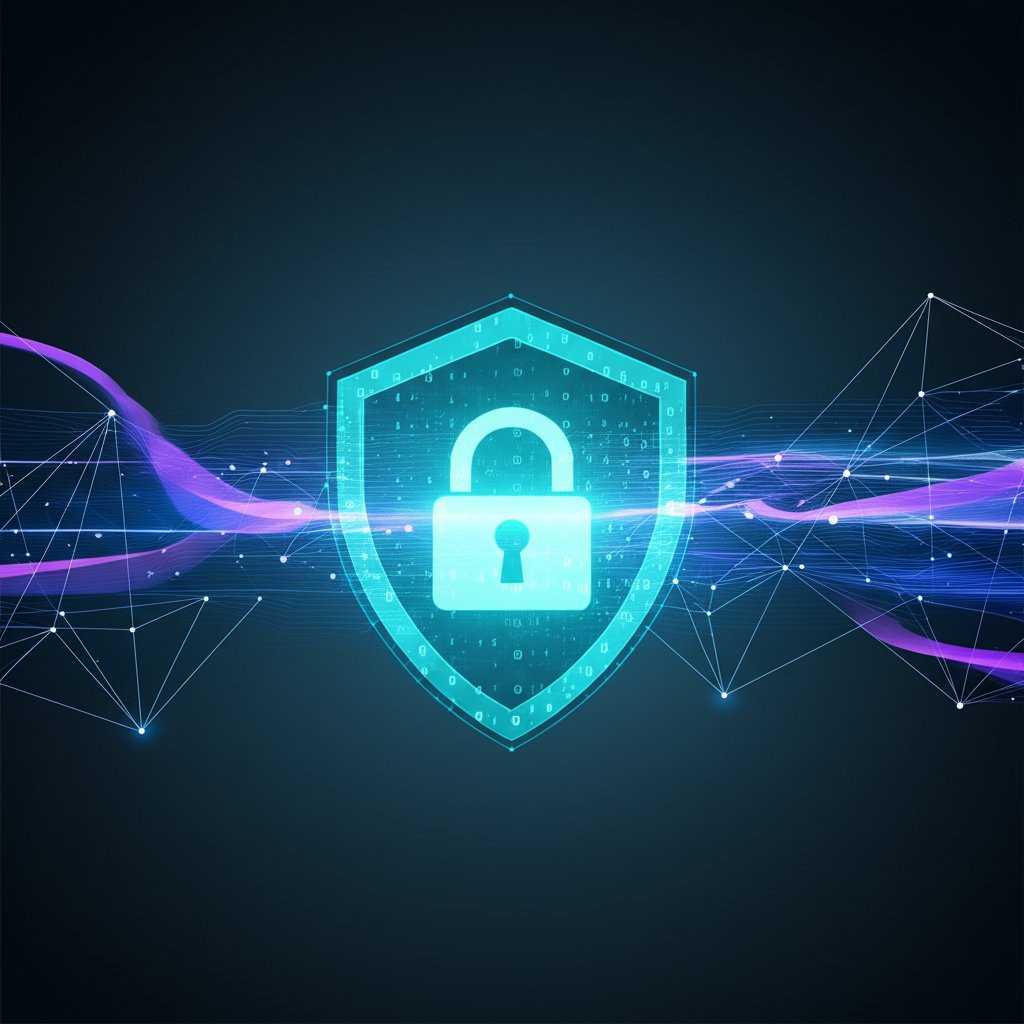As a security professional, I’ve seen firsthand how quickly cyber threats evolve. For decades, passwords have been our primary defense online, but let’s be honest: they’ve become more of a liability than a fortress. We’re all tired of trying to remember complex strings of characters, and cybercriminals are certainly taking advantage of our password fatigue. So, what if I told you there’s a fundamentally more secure way to protect your digital life and your business? It’s called passwordless authentication, and it’s not just a fancy buzzword – it’s a game-changer.
Beyond Passwords: Unpacking Why Passwordless Authentication is Truly Secure (for You & Your Business)
You’ve probably heard the term “passwordless” thrown around, but you might be wondering: how can something be more secure if it involves no password? Isn’t that just… leaving the door open? I assure you, it’s quite the opposite. Passwordless authentication doesn’t just eliminate the hassle; it fundamentally changes the security landscape for the better, addressing core vulnerabilities that traditional passwords simply can’t.
Core Vulnerabilities: Why Our Digital Doors Need Reinforcing
Let’s start with the elephant in the digital room: the inherent weaknesses of passwords. Our reliance on passwords has opened us up to a relentless barrage of attacks. Think about it: every time you create an account, you’re essentially creating a “shared secret” – something both you and the service provider know. This shared secret, your password, becomes the prime target for cybercriminals. Why?
- Phishing Attacks: These sneaky attempts trick you into revealing your password on fake websites designed to look legitimate. Once a phisher has your password, it’s game over for your account. Passwordless authentication mitigates this by removing the password entirely. There’s no password for an attacker to phish from you, as the authentication relies on unique cryptographic keys tied to your device, not a secret you type.
- Credential Stuffing: If hackers steal passwords from one breached site, they’ll inevitably try those same passwords on hundreds of other sites. We all reuse passwords, don’t we? This makes credential stuffing incredibly effective. With passwordless authentication, there are no common passwords to reuse across sites. Each login creates a unique cryptographic credential tied to a specific service, rendering stolen credentials from one site useless elsewhere.
- Brute-Force Attacks: Automated tools relentlessly guess passwords until they hit the right combination. Stronger passwords help, but they’re not foolproof against persistent attackers with vast computing power. Passwordless methods replace guessable passwords with complex cryptographic operations that are practically impossible to brute-force. Your device and your biometrics or PIN generate a unique, non-guessable proof of identity.
- Data Breaches: When a service provider’s database is breached, our stored passwords (even if hashed) can be compromised, leading to widespread account takeovers. Passwordless authentication dramatically reduces the impact of data breaches on user credentials. Since no password or shared secret is stored on the server, there’s nothing for attackers to steal that can be used to impersonate you. Instead, the server only holds public keys, which are useless to an attacker without your private key and device.
These are common cyber threats that lead to data breaches and account takeovers, costing individuals and businesses dearly. Passwordless authentication, by design, fundamentally addresses these threats by removing the central point of failure: the password itself. No password to phish, no password to stuff, no password to brute-force, no password for a server to store and leak. That’s a significant step toward safeguarding your online privacy and security.
Password Management: The Challenge Passwordless Eradicates
Managing passwords is, frankly, a nightmare. We’re told to use long, complex, unique passwords for every single service. But who can remember 50 different 16-character alphanumeric strings? We can’t, and that’s why we resort to bad habits:
- Reusing passwords across multiple sites.
- Using easily guessable passwords (like “password123” or “Summer2024!”).
- Writing them down on sticky notes.
This struggle isn’t just an inconvenience; it’s a massive security vulnerability. Cybercriminals thrive on our password management fatigue. Passwordless authentication eradicates this challenge entirely. It eliminates the need for you to remember complex passwords because, well, there aren’t any! This shift from “something you know” to “something you have” (like your phone) or “something you are” (like your fingerprint) fundamentally simplifies access while boosting security. For services that haven’t yet embraced passwordless, I still strongly recommend using a reputable password manager. It’s the best way to maintain strong, unique passwords for now.
How Passwordless Authentication Works: Methods & Security Advantages
The beauty of passwordless authentication lies in its diverse methods, all designed to replace that vulnerable shared secret with more robust forms of identity verification. Instead of relying on something you *know*, these methods typically combine “something you have” (a trusted device) with “something you are” (biometrics) or “something you possess” (a security key).
Common Passwordless Methods:
- Biometrics: This is perhaps the most familiar method. Your fingerprint, face scan, or even voice recognition is used to unlock your device or approve a login. When you log into a service using biometrics, your unique biological data never leaves your device. Instead, your device uses your biometric input to unlock a secure cryptographic key that then authenticates you to the service. This method is incredibly convenient and difficult for attackers to replicate.
-
Security Keys (FIDO/Passkeys): Built on FIDO (Fast Identity Online) standards, these are often considered the gold standard for passwordless security.
- Hardware Security Keys: These are small physical devices (like a USB stick) that you plug into your computer or tap to your phone. When you attempt to log in, the service requests a cryptographic signature from your key. You confirm by tapping the key, often combined with a PIN or biometric on the key itself. They are phishing-resistant because they only authenticate with the legitimate website.
- Software Passkeys: An evolution of FIDO, passkeys are cryptographic credentials stored securely on your device (e.g., phone, computer) and synced across your devices (via iCloud Keychain, Google Password Manager, 1Password, etc.). When you log in, your device uses your PIN or biometric to authorize the passkey, which then securely authenticates you to the service. Like hardware keys, passkeys are inherently phishing-resistant and virtually impossible to guess or steal from a server. They offer unmatched convenience and security.
- Magic Links / One-Time Codes: In this method, instead of entering a password, you request a unique, single-use link or code to be sent to your registered email address or phone number. Clicking the link or entering the code logs you in. While simpler to implement and password-free, the security of magic links relies heavily on the security of your email or phone number. They are generally more secure than passwords alone but are susceptible to email account compromise or SIM-swapping attacks.
Each of these methods enhances security by eliminating the weakest link: the memorized password. They leverage strong cryptography and often device-bound authentication, making it vastly more difficult for attackers to gain unauthorized access.
Two-Factor Authentication: The Foundation of Passwordless Security
You’re probably familiar with Two-Factor Authentication (2FA) or Multi-Factor Authentication (MFA). It’s that extra step beyond your password, like a code sent to your phone or a fingerprint scan. It’s great, right? It adds a crucial layer of defense. But here’s the kicker: traditional 2FA still relies on a password as its first factor. If your password is weak or stolen, that first layer is compromised, and the second factor is all that’s standing between you and a breach.
This is where passwordless truly shines. Many passwordless methods are inherently multi-factor, but without the password vulnerability. They often combine:
- Something you have: Your trusted device (phone, security key).
- Something you are: Your biometrics (fingerprint, face scan) to unlock that device.
This means the authentication process itself becomes incredibly robust. Your identity isn’t verified by a shared secret that can be stolen, but by a combination of unique factors tied to you and your physical device. For instance, Passkeys (built on FIDO2 standards) are a prime example of this: they are device-bound and inherently phishing-resistant. This combination is a significantly stronger defense than password-based MFA.
If you’re not fully passwordless yet, enabling 2FA on all your critical accounts (email, banking, social media) is the single most impactful step you can take today. Look for options like Authenticator Apps (Google Authenticator, Microsoft Authenticator), physical security keys, or even SMS codes (though less secure than app-based or physical keys). Many services walk you through the setup process in their security settings.
Beyond Login: Holistic Digital Security in a Passwordless World
While passwordless authentication dramatically strengthens your entry points, a truly robust digital security posture extends beyond just logging in. It’s about protecting your entire online footprint. Think of passwordless as securing your front door, but you still need to secure your windows, back door, and valuables inside. Here are other crucial elements to consider:
Securing Your Network: VPN Selection
Even with passwordless logins, your internet traffic can be exposed on public Wi-Fi networks or monitored by your Internet Service Provider. A Virtual Private Network (VPN) encrypts your internet connection, making it much harder for others to snoop on your online activity. When selecting a VPN, look for providers with a strict no-logs policy, strong encryption (like AES-256), and servers in locations relevant to your needs. While not directly related to authentication, a VPN complements your passwordless strategy by protecting your data in transit.
Private Conversations: Encrypted Communication
What you say online matters, and so does who can hear it. Encrypted messaging apps like Signal, WhatsApp (with end-to-end encryption enabled), and ProtonMail for email ensure that only the sender and intended recipient can read your messages. This is vital for both personal privacy and business confidentiality, safeguarding communications that could contain sensitive information even if your login is secured with passwordless methods.
Browser Fortification: Protecting Your Online Journey
Your web browser is your gateway to the internet, and it can collect a surprising amount of data about you. Harden your browser by:
- Keeping it updated to patch vulnerabilities.
- Using privacy-focused extensions (e.g., ad blockers, script blockers).
- Configuring privacy settings to block third-party cookies and “Do Not Track” requests.
- Considering privacy-focused browsers like Brave or Firefox.
Mindful Presence: Social Media Safety
Even with passwordless access to your social media, you need to manage what you share. Review your privacy settings regularly, be cautious about sharing personal information, and be aware of who can see your posts. Passwordless authentication helps prevent unauthorized access to your accounts, but it can’t protect you from oversharing or falling for social engineering tactics within the platforms themselves.
Data Minimization and Secure Backups: Safeguarding Your Digital Assets
Data Minimization: Less to Lose
A core principle of good security is data minimization: only collect and retain the data you absolutely need. Passwordless authentication inherently applies this principle to your credentials. By eliminating the password, it reduces the amount of highly sensitive authentication data that needs to be stored (or could be stolen) from servers. Instead of a database of passwords that could be compromised, the system relies on cryptographic proofs tied to your device. This means if a service provider’s system is breached, there’s no password to steal, significantly minimizing the impact on your personal credentials. It’s a huge step forward for individual and small business cyber security.
Secure Backups: Your Safety Net
While passwordless authentication is robust, no system is 100% foolproof. What happens if you lose your primary device that holds your passkeys or biometric data? This is where secure backups become critical. Many passwordless systems offer recovery options, such as backup codes or the ability to register multiple devices. It’s essential to understand and implement these recovery mechanisms. For example, if you use a hardware security key, having a backup key stored securely is paramount. This ensures you can regain access even if your primary method is unavailable, without resorting to insecure password resets.
Threat Modeling: Adapting to the Passwordless Landscape
As security professionals, we engage in threat modeling – imagining how an attacker might compromise a system. The shift to passwordless authentication fundamentally alters this model. Instead of focusing on password compromise (phishing, brute force, credential stuffing), the focus shifts to device compromise. This doesn’t mean the game is over; it means the rules have changed. Our defenses need to adapt, embracing models like Zero Trust. For example, strong device security (PINs, biometrics, up-to-date software) becomes even more critical. Understanding this shift empowers us to protect ourselves better. In the event of a data breach at a service provider, your passwordless accounts are much safer, as there’s no password for attackers to steal. However, staying vigilant about other types of scams and keeping your devices secure remains essential. No solution is 100% foolproof, but passwordless authentication significantly raises the bar for attackers.
Conclusion: Taking Control of Your Digital Security & The Path Forward
The promise of passwordless authentication isn’t just about convenience; it’s about fundamentally rethinking how we secure our digital lives. It tackles the root causes of many common cyber threats, empowering everyday internet users and small businesses with stronger, more intuitive protection. While embracing passwordless, remember that it’s part of a broader digital security strategy. Keep your devices secure, be mindful of your online presence, and always stay informed.
Actionable Advice for Individuals:
- Start Adopting Passkeys: Look for opportunities to set up passkeys on services like Google, Apple, Microsoft, Amazon, PayPal, and others that support them. This is the most secure and convenient passwordless method available today.
- Prioritize Device Security: Since your device becomes your key, ensure it’s protected with strong PINs, biometrics, and kept updated with the latest software and security patches.
- Enable 2FA Everywhere Else: For any accounts not yet supporting passwordless, enable robust Two-Factor Authentication (2FA) using authenticator apps or physical security keys. Avoid SMS 2FA where possible.
- Use a Password Manager: Continue to use a reputable password manager for accounts that still require traditional passwords, generating strong, unique passwords for each.
Actionable Advice for Businesses:
- Evaluate Passwordless Solutions: Explore enterprise-grade passwordless identity providers that support FIDO2/Passkeys, biometrics, or magic links, integrating with your existing identity infrastructure.
- Pilot Programs: Start with pilot programs for specific departments or user groups to understand implementation challenges and user experience.
- Employee Education: Educate your workforce on the benefits and usage of passwordless technologies, emphasizing how it protects them and the organization.
- Phased Rollout: Plan a phased adoption strategy, migrating critical systems first and gradually expanding across the organization.
The future of digital security is passwordless. Major tech companies are actively championing its adoption, and the ecosystem is maturing rapidly. By taking proactive steps today, both individuals and businesses can embrace this transformative technology, moving beyond the vulnerabilities of passwords and stepping into a more secure and streamlined digital experience.
Protect your digital life! Start with a password manager for your existing password-based accounts and enable 2FA today on everything you can, as you transition to a passwordless future. The power to secure your online world is increasingly in your hands – literally.









